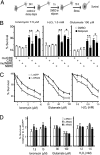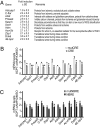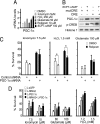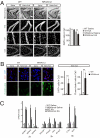NR4A orphan nuclear receptors as mediators of CREB-dependent neuroprotection
- PMID: 20566846
- PMCID: PMC2901488
- DOI: 10.1073/pnas.1007088107
NR4A orphan nuclear receptors as mediators of CREB-dependent neuroprotection
Abstract
Induced expression of neuroprotective genes is essential for maintaining neuronal integrity after stressful insults to the brain. Here we show that NR4A nuclear orphan receptors are induced after excitotoxic and oxidative stress in neurons, up-regulate neuroprotective genes, and increase neuronal survival. Moreover, we show that NR4A proteins are induced by cAMP response element binding protein (CREB) in neurons exposed to stressful insults and that they function as mediators of CREB-induced neuronal survival. Animals with null mutations in three of six NR4A alleles show increased oxidative damage, blunted induction of neuroprotective genes, and increased vulnerability in the hippocampus after treatment with kainic acid. We also demonstrate that NR4A and the transcriptional coactivator PGC-1alpha independently regulate distinct CREB-dependent neuroprotective gene programs. These data identify NR4A nuclear orphan receptors as essential mediators of neuroprotection after exposure to neuropathological stress.
Conflict of interest statement
The authors declare no conflict of interest.
Figures





References
-
- Lonze BE, Ginty DD. Function and regulation of CREB family transcription factors in the nervous system. Neuron. 2002;35:605–623. - PubMed
-
- Lonze BE, Riccio A, Cohen S, Ginty DD. Apoptosis, axonal growth defects, and degeneration of peripheral neurons in mice lacking CREB. Neuron. 2002;34:371–385. - PubMed
-
- Mantamadiotis T, et al. Disruption of CREB function in brain leads to neurodegeneration. Nat Genet. 2002;31:47–54. - PubMed
Publication types
MeSH terms
Substances
Associated data
- Actions
Grants and funding
LinkOut - more resources
Full Text Sources
Molecular Biology Databases

